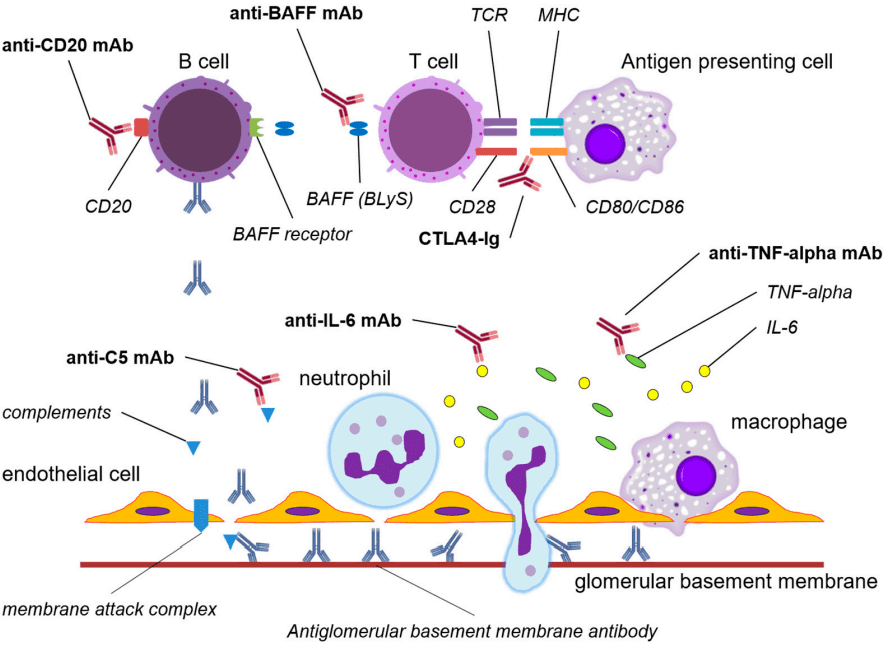NAA and Lung Hemorrhage Nephritis Syndrome (Goodpasture Syndrome)
Overview of Goodpasture's Syndrome
Goodpasture's syndrome (GS) is a rare disease. It is an organ-specific autoimmune disease that is mediated by anti-glomerular basement membrane (anti-GBM) antibodies. It typically presents as an acute renal failure caused by rapidly progressive glomerulonephritis, accompanied by pulmonary hemorrhage, that may be life-threatening.
Autoantibodies in Goodpasture's Syndrome
In about one-third of patients with GS, direct immunofluorescence of kidney biopsy demonstrates linear binding of autoantibodies to the glomerular basement membrane (GBM). The anti-GBM antibodies are the noncollagenous-1 (NC1) domain of the α3 chain in type IV basement membrane collagen (α3[IV] NC1). Over the years, as the etiology of the disease, has become clearer, GS is now known to be associated with the presence of anti-GBM autoantibodies, both circulating and depositing in the kidneys. The clinical spectrum of this disease is variable. In some cases, glomerulonephritis (GN) with anti-GBM antibodies may be found without pulmonary hemorrhage. Despite being thought of as a prototypic antibody-mediated autoimmune disease, it is becoming apparent that both humoral and cellular immune mechanisms act in concert to initiate and perpetuate disease.
 Fig.1 The role of autoantibodies in anti-GBM disease.1
Fig.1 The role of autoantibodies in anti-GBM disease.1
Autoantibodies in GS have been shown to be pathogenic in passive transfer experiments in the 1960s, where antibodies, purified from the serum of patients with GS, were injected into squirrel monkeys, who developed proteinuria within hours, with linear binding of the antibodies to the GBM and a proliferative but not crescentic nephritis. The close relationship between the antibody levels and the severity of disease and the effectiveness of plasma exchange, which removes circulating antibodies when treating GS, provides further evidence for the profound role of antibodies in the pathogenesis of this disease. The antibody epitope has not yet been clearly defined. The epitope is conformational since the reduction of the internal disulfide bonds of α3(IV) NC1 leads to loss of recognition by autoantibodies. There is evidence that the amino-terminal end of α3(IV) NC1, including the junctional region with the triple helix, is essential for antibody recognition.
Services at Creative Biolabs
The potential of autoantibody application in lung hemorrhage nephritis syndrome (Goodpasture syndrome) has been discovered and is worth exploring. As a professional antibody research explorer focusing on autoantibody over years, Creative Biolabs has established a comprehensive research platform. Our platform provides a variety of autoantibody related services and products including but not limited to:
- NAA Detection
- NAA Profiling
- NAA Affinity Measurement
- NAA Epitope Mapping
- NAA Paratope Mapping
- NAA Detection Kits
If you are interested in our services, or you have any other requirements for autoantibody research, please don't hesitate to contact us for more information.
Reference
- Yamashita, Marina, et al. "The Immunobiological Agents for Treatment of Antiglomerular Basement Membrane Disease." Medicina 59.11 (2023): 2014.

